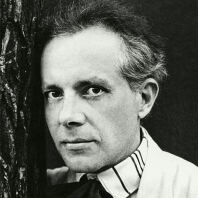Béla Bartók
Composer
Béla Bartók, together with his friend and colleague Zoltán Kodály, established the tradition of major Hungarian composers in the 20th century, which continues through György Ligeti and György Kurtág to Peter Eötvös. At the same time, his works represent Classical Modernism in an almost ideal way, insofar as this term is understood to mean the balance between progressiveness and a sense of tradition.
Bartók was born in a small town in the Banat region, then Hungarian, now Romanian, and came from a music-loving family. His extraordinary talent as a pianist and composer was noticed at an early age. Bartók spent his student years in Bratislava and Budapest, where he eventually taught piano at the conservatory from 1908 to 1934. As an internationally acclaimed pianist, he performed his own works in Berliner Philharmoniker concerts in 1920 and 1926. He pursued his tireless research of Hungarian, Slavic and Arabic folklore not only as a collection of material for his own works, but also in the service of scholarship. He was also an attentive observer of international stylistic developments: the innovations of Debussy, Stravinsky and Schoenberg were among his sources of inspiration, as was Franz Liszt’s late work. An opponent of fascism and National Socialism, Bartók emigrated to the USA in 1940. There the composer, beset by financial worries and at times seriously ill, wrote some of his best and today most popular works: the Concerto for Orchestra, the Sonata for Solo Violin, the Third Piano Concerto and his only Viola Concerto. Thanks to their quality, Bartók’s vocal and orchestral works as well as his chamber music have established themselves as part of the repertoire.